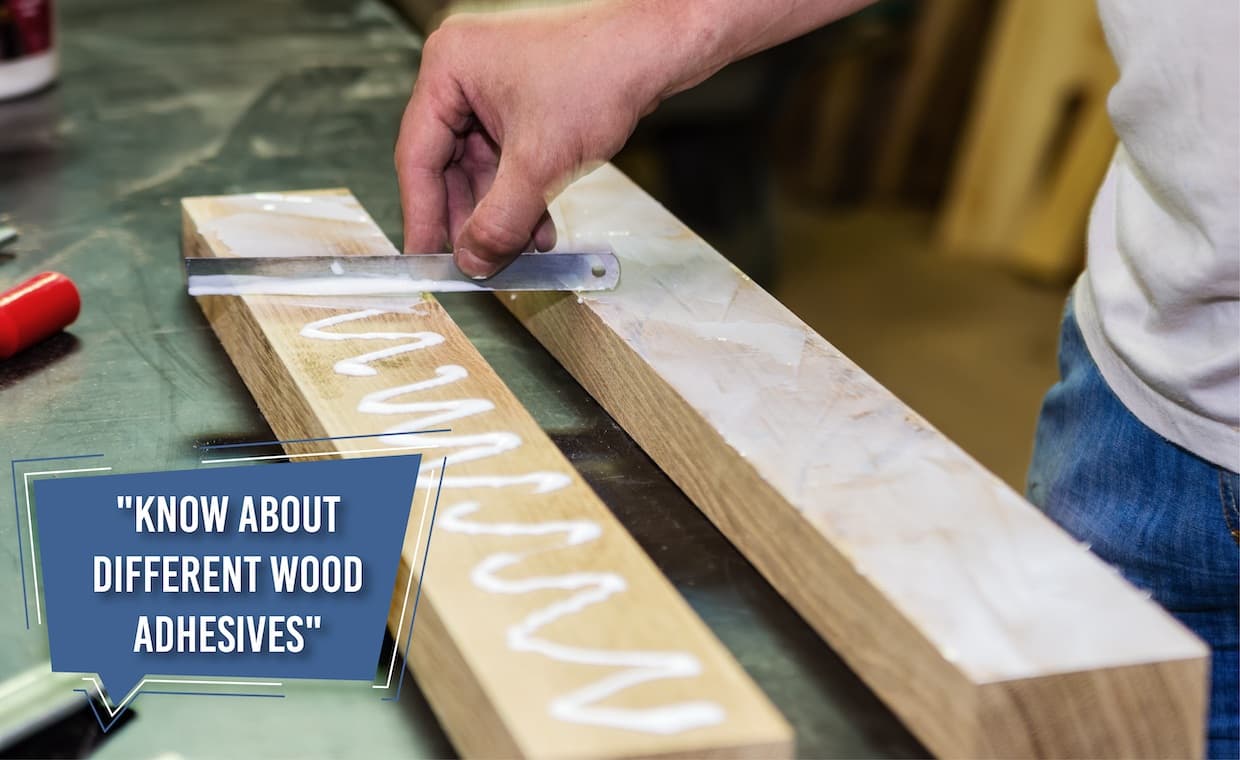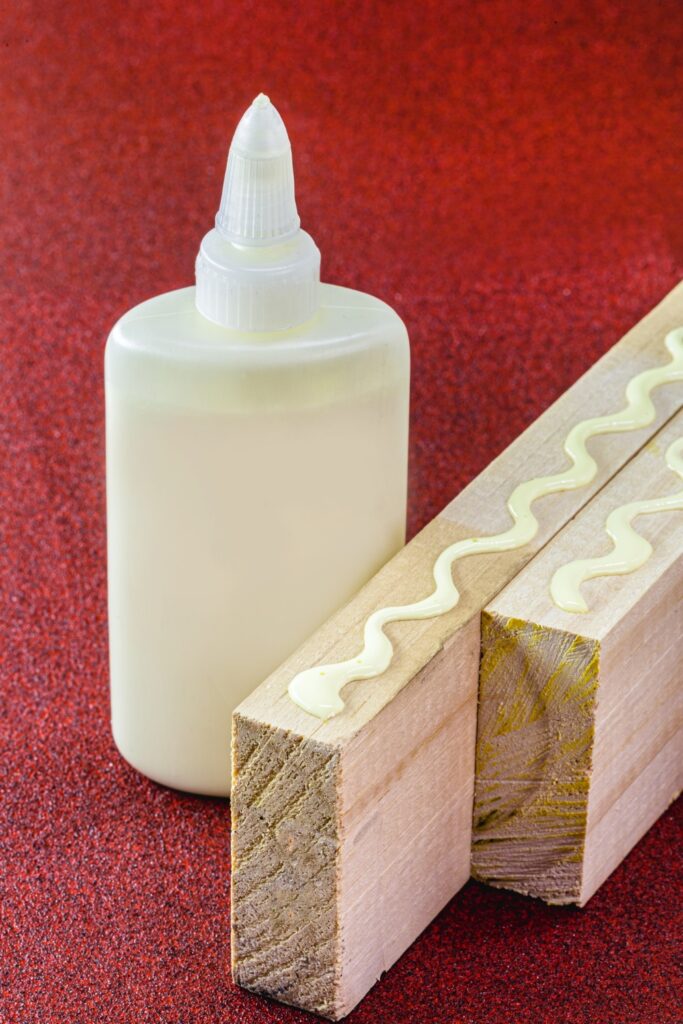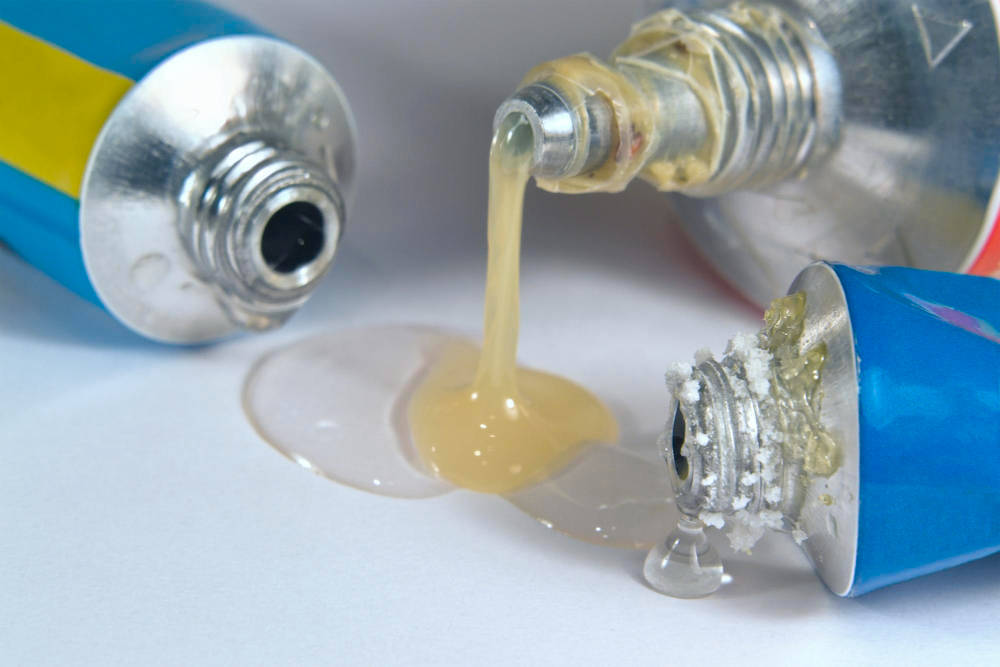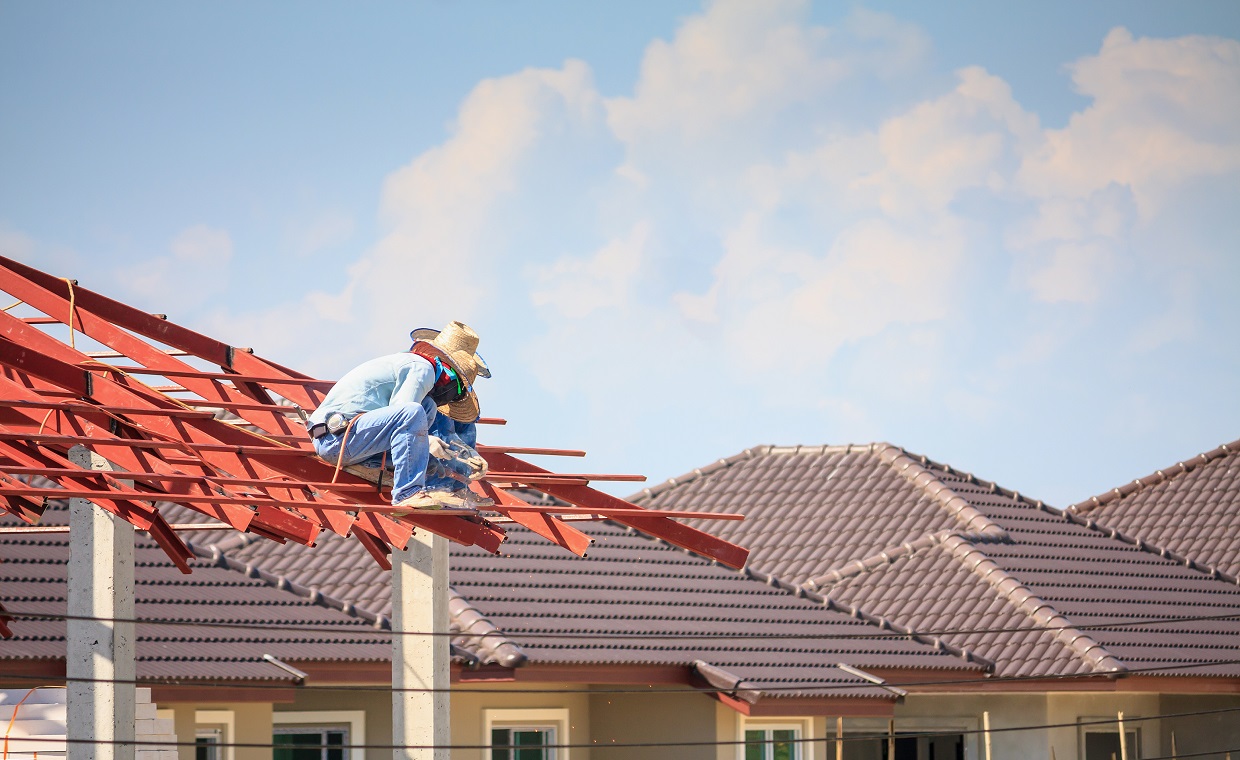
Table of Contents
Quick Summary
- Introduction: Wood is a versatile construction material used for interiors and exteriors, and adhesives are preferred over nails and screws for bonding as they prevent cracks.
- Understanding the different types of wood adhesive.
- Formaldehyde adhesives are synthetic and vary in properties based on co-reactants like phenol, resorcinol, urea, or melamine.
- Phenol formaldehyde adhesive provides excellent adhesion and is used in making plywood.
- Resorcinol formaldehyde adhesive is durable, water-resistant, and ideal for exterior use, though it is expensive.
- Urea formaldehyde adhesive is affordable, colourless, and fast-curing but lacks water resistance.
- Melamine formaldehyde adhesive balances cost and performance and is used in plywood, particle boards, and finger joints.
- Polyvinyl acetate (PVA), also known as carpenter’s glue, is a safe, non-toxic, ready-to-use adhesive ideal for joinery and furniture work.
- Epoxy adhesives come in two liquid parts, offer high strength, and are best for filling cracks and gaps in wood despite being costly.
- Cyanoacrylate (CA) or super glue dries quickly, forms a strong glossy bond, and works well for bonding and repairing various wood types.
- Hide glue is a natural adhesive made from animal collagen, provides strong bonds, and is easily repairable though not moisture-resistant.
Wood is a widely used construction material. It is used for both the interiors and exteriors of a house. As the popularity of woodworking grew, so did the use of adhesives to join the wood by creating a solid bond. Another option is to use nails and screws to join the wood assembly, but it is not very practical because sometimes nails and screws cause cracks in the wood. Henceforth, adhesives are the best and most reliable to bond wood together. Learning about types of wood adhesives aids in choosing the best one for the woodwork because there is no universal adhesive. Stay with us to get a quick overview of the various types of wood adhesives. As per “Brief Survey of Wood Adhesives”, research by Carl A. Eckelman, Adhesive is a matter applied on different surfaces to bind and join them firmly. Adhesives have many applications, including but not limited to metals, tiles, wood, marble and many other surfaces. Adhesives used for woodwork are counted as wood adhesives or wood glue. We discussed common woodworking adhesives in the following article.
Different Types of Wood Glue
Adhesives are classified based on composition here. Following is a list of the most commonly used wood adhesives.
- Formaldehyde Adhesives
- Polyvinyl Acetate (PVA)
- Epoxy Adhesives
- Cyanoacrylate (CA)
- Hide Glue
01. Formaldehyde Adhesives

These synthetic wood adhesives have formaldehyde as the base and are reacted with phenol, resorcinol, urea, melamine or mixtures. The properties of formaldehyde adhesives depend on the co-reactant used.
Phenol formaldehyde adhesive has good adhesion to wood and is primarily used in making plywood.
Resorcinol formaldehyde adhesive is strong and durable and cures at room temperature. It is widely used in exteriors and is expensive. It has a dark purple colour.
Urea formaldehyde adhesive is widely used because of its low cost. It is non-flammable, colourless and has a rapid curing time. However, it is not water-resistant.
Melamine formaldehyde adhesive has an average price and performs better than urea but less than phenol. It is water-resistant and is primarily used in plywood, particle board and finger joints.
02. Polyvinyl Acetate (PVA)

PVA is the most commonly used adhesive for woodwork and is widely known as ‘wood glue’ or ‘carpenter’s glue.’ PVA is a synthetic adhesive and is ready to use. It has a rubbery polymer, which forms a hard bond on drying. PVA glue is non-toxic, non-flammable, and safe to use with bare hands. Joinery, assembling and fixing furniture pieces, cabinet making and repairing wooden objects are all standard applications.
03. Epoxy Wood Adhesives

Epoxy adhesive is also a synthetic adhesive used to bond wood. It is not ready to use and comes in two parts, both of which are liquids that must be combined and applied. Different epoxy adhesives are available for high temperatures and room temperatures. The pot life can range from a few minutes to an hour or more. Epoxy is expensive. The best use of Epoxy is in crack and gap filling in wood.
04. Cyanoacrylate (CA)

Cyanoacrylate, also known as ‘Super Glue’ is a synthetic adhesive with quick-drying properties. It is ready for use with a single component. It has a strong bond, high thermal resistance and a glossy finish. This glue is available in different viscosities, from water-thin liquids to thixotropic gels. Mostly used to bond wood such as – maple, balsa, plywood and rosewood, they are the best for filling voids and cracks.
05. Hide Glue

Courtesy - craftsmanprotools
Hide glue is a natural wood adhesive made from collagen from animal hides (skins) and forms an extremely strong bond. It comes in liquid or granules, as flakes or sheets to be dissolved in water. It must be heated before being applied to the wooden pieces to be glued. Additionally, the wooden pieces should also be warm because cold ones might cool down the glue. The moisture resistance of hide glue is the lowest. It is easy to repair hide glue joints, just heat the joint and add more hide glue.
Endnote: Based on the type of woodwork and other factors like cost, the temperature of the woodwork and the bond strength required, choose the best from the different types of wood adhesives. Choosing the suitable wood adhesive will add perfection to the woodwork and not burn a hole in the pocket. Since we mentioned the word ‘woodwork’ a lot, if you are curious to know about different types of wood used for woodwork, then check out the below article:
Also Read: 15 Popular Types of Wood used in the Construction Industry!
FAQs on Types of Adhesives in Woodwork
01. What is the best adhesive for wood joints?
Polyvinyl Acetate (PVA) glue, commonly known as carpenter’s glue, is the best for most wood joints due to its strong bond, ease of use, and non-toxic nature.
02. Which wood adhesive is most suitable for outdoor use?
Resorcinol formaldehyde and epoxy adhesives are ideal for outdoor projects because they offer excellent water and weather resistance.
03. What is the difference between epoxy and PVA glue?
Epoxy glue is a two-part adhesive that fills gaps and withstands heat and moisture, while PVA is a ready-to-use water-based adhesive best suited for indoor applications.
04. Is hide glue still used in modern woodworking?
Yes, hide glue is still used, especially in fine furniture and musical instruments, as it allows easy repair and creates a traditional, strong bond.
05. Can super glue (cyanoacrylate) be used on all types of wood?
Super glue works well on most woods like maple, plywood, and balsa but is best for small repairs, cracks, and precision bonding rather than large surfaces.
References
Carl A. Eckelman (n.d.) Brief Survey of Wood Adhesives. Forestry & Natural Resources. [Online]154 Available from https://extension.purdue.edu/extmedia/FNR/FNR-154.pdf






























